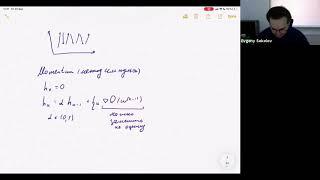
Reference Angle for an Angle, Ex 2 (Using Radians)
Комментарии:

I love you from the moon back!! Thanks Patrick!
Ответить
Omg thank you so much. the videos on my eBook website sucked at explaining this. now i get it thank you!
Ответить
You just saved my life for my finals!!
Ответить
Thank you very much. Your videos helped me a lot!
Ответить
Amazing!! Thanks for this sir !! :)))))))))
Ответить
You are the reason for my B in College Algebra last semester. Now in Trig you helping me out. Amazing work
Ответить
Thanks for the help!!!!!!!!
Ответить
you need to explain why your way to descriptive
Ответить
We didnt even learn it this way. We have to convert the radians to degrees and find the reference angles that way. This wouldve been so much easier.
Ответить
Thank you very much !
Ответить
God bless bro
Ответить
Dude! You saved my butt on my math homework! Thanks!
Ответить
hello guys, can someone please tell me how someone can find for example SINE40 without using calculator??? thanks
Ответить
Okay I'm kind of still confused. Can you also find the reference angle by converting radians to degrees by multiplying the given number by 180/pi? For example if you're given 5pi/6 can't you just multiply this by 180/pi cross out the pi's and simplify to get your degrees and then take it from there or is that totally totally wrong?
Ответить
Thank you so much!
Ответить
i just convert to degrees then convert back to radians when im done
Ответить
how do you find associated points patrickJMT
Ответить
Thank you!
Ответить
Pre Calc final tomorrow.... Wish me luck??
Ответить
Patrick,
Nice work. However, I show my students that for an angle given in radians in the form m*pi/n, that the reference angle is merely pi/n. They still have to decide what quadrant the original angle is in to properly evaluate the appropriate trig function. At least for the major angles with denominators of 6, 4 and 3.

I'm really confused on the 11pi/4 one. Wouldnt you subtract 2pi instead of 3pi because 11pi/4 is in quad four?
Ответить
why do you keep the reference angle positive when the actual angle is negative?
Ответить
I never thought about putting it into a mix number. Professor, why you know teach us short cuts!
Ответить
thank you !
Ответить
Notice how it's always pi over the original denominator. You don't have to do any work
Ответить
This was so nicely explained! I'm so glad I came across this channel ^_^ Thank you so much!
Ответить
This helped me so much!!! This kind of thing was really stumping me! I can't thank you enough!
Ответить
Im sorry but i didn't understand anything .... ik its my fault lol but fr trig is my ultimate enemy.
Ответить
Thanks for this. My teacher has the worst teaching methods for math I've ever encountered and I have a test tomorrow. I might be able to do a little bit better now.
Ответить
If you don't like dealing with radians in these kinds of problems it is easy to convert to degrees then going from there, if your answer needs to be in radians then convert back at the end.
Ответить
Thanks
Ответить
6pi- 5pi is NOT 1PI! ITS ONLY PI!
Ответить
Bruh you really helped me with my unit test, thank you
Ответить
i am still confused
Ответить
Wow. It's so helpful! Thank you so much. Because of that, I SUBSCRIBED.
Ответить
Super helpful video!
Ответить
An easy way to figure out where it lies is to divide up pi (so each 180 degrees)up into sections by the denominator, and then "move" the number of sections required
for example: if its 3pi/4, divide the top and bottom part of the graph into 4 sections each (8 sections total) and then move 3 sections. Saves the guess work. If it was 11pi/4, you would move 11 sections around the graph

I'm even more confused than when I started.
Ответить
great video! My teachers nor friends were able to explain this as clearly and easily as you did! thank you
Ответить
what about what if the given is -13pi/3? isn't it going to be the reference angle itself?
Ответить
Best one...
Ответить
I saw this man already so bie
Ответить
Life saver frfr
Ответить
omg a few seconds from you and it just clicked in my mind, a few seconds from my prof and I'm already giving up, thank you for this!
Ответить
I don't understand anything lol
Ответить
thank uuuu smmmmm this helps a lot!
Ответить
please let me know how
- pi/6 is equal to 5pi/6

My module for this lesson never seemed to clearly explain how to figure out which quadrant a radian is in, so thank you for this video! ^_^
Ответить
his hand cover evthing becasue hes a lefty
Ответить
this is really helpful, but i am not quite getting to grips with 15 angle (5pi/8)
Ответить

























